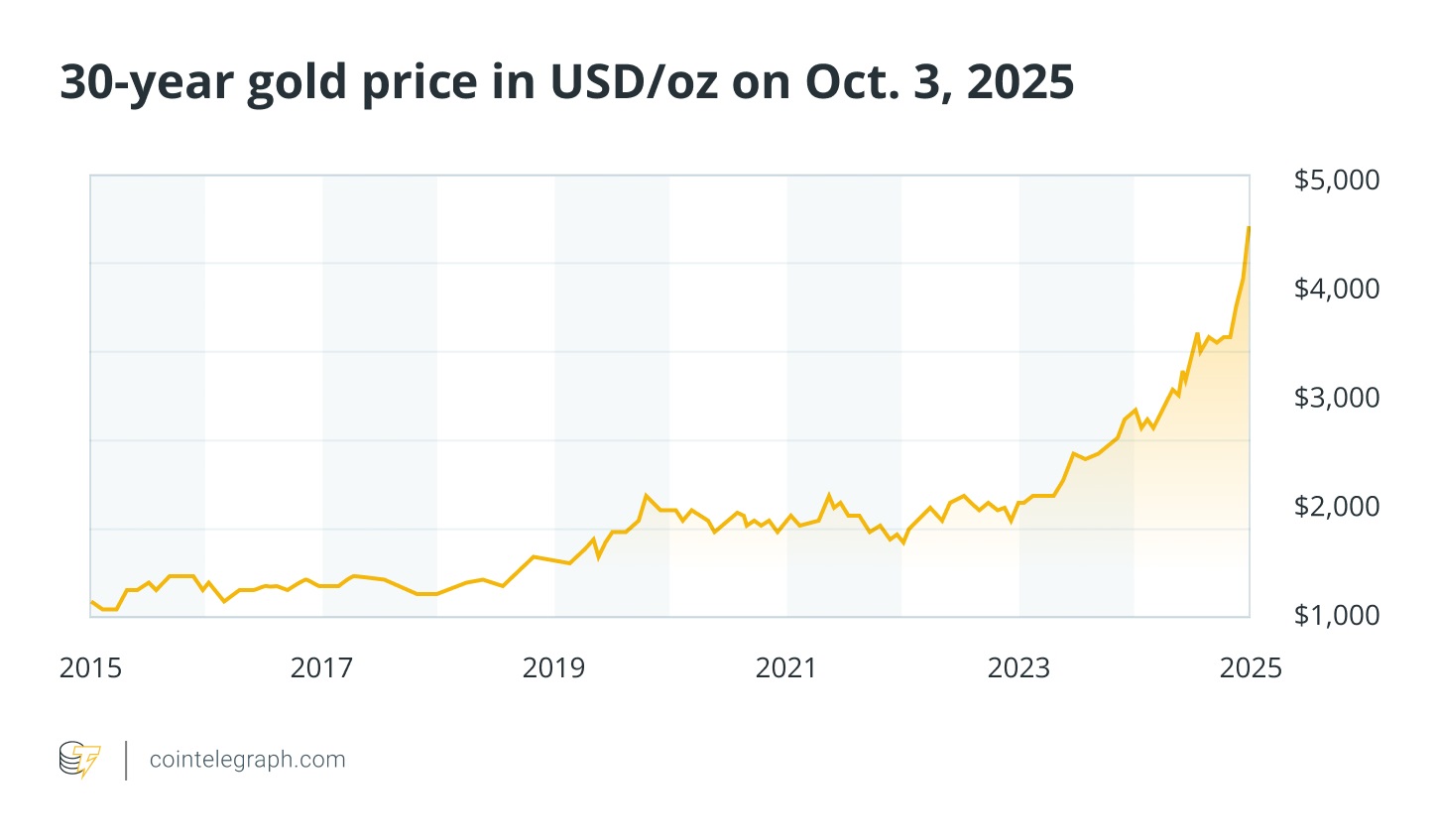
How the Decline of Gold Prices Could Influence Bitcoin to Reach $200K
An analysis of the impact of gold's fluctuating value on Bitcoin's market potential, with insights into investment trends and economic factors.
How the Decline of Gold Prices Could Influence Bitcoin to Reach $200K
The Gold Market Reaction
After an impressive rally that saw gold soar above $4,300 per ounce, strong demand for safe-haven investments led to a record. However, by October 2025, the market reacted with profit-taking.
On October 17, 2025, gold prices plummeted over 2% just after reaching their peak. At the time, spot gold was valued at approximately $4,023 per ounce, marking an 8.1% decline from its highest price of $4,378.69.
The decline was fueled by easing tensions in US-China trade, following statements by President Trump regarding the sustainability of full-scale tariffs on China. Additionally, a stronger US dollar and an increasing investor interest in assets like Bitcoin contributed to this downturn.
Did you know? The phrase “digital gold” emerged as Bitcoin’s limited availability and independence started echoing gold’s traditional role as a safeguard against inflation.
Historical Trends in Gold
Gold’s narrative has been shaped by periods of both surges and sharp declines, primarily influenced by inflation, interest rates, and global events. Key moments include:
- 1980-1999 Decline: Gold hit nearly $850 per ounce in 1980, driven by inflation and geopolitical tensions, before dropping by over 60% by 1999 during a bear market.
- 2012-2018 Decline: A post-2011 crash saw gold prices drop as stabilizing economies encouraged investment in equities, which outperformed gold.
- 2020s Surge: Amid global uncertainties due to COVID-19, gold regained its status as a safe-haven asset, climbing from $1,785 in 2020 to over $3,200 by early 2025.
However, the October 2025 crash sent investors towards alternatives like Bitcoin, a cryptocurrency recognized for its independence from governmental policies.
 Gold Market
Gold Market
Shift Towards Bitcoin
The narrative surrounding Bitcoin as “digital gold” has gained momentum among younger investors who now view it as a modern hedge against inflation. Bitcoin’s market cap skyrocketed from $134 billion in 2019 to exceed $2.4 trillion by mid-2025.
Institutional-grade products like spot Bitcoin ETFs have attracted substantial regulated inflows. In early October 2025, US Bitcoin ETFs received record weekly inflows of $3.55 billion, largely driven by BlackRock’s iShares Bitcoin Trust, pushing Bitcoin prices above $126,000. In contrast, gold ETFs saw outflows of over $2.8 billion recently.
Is $200,000 for Bitcoin Achievable?
Bitcoin’s trajectory towards $200,000 is bolstered by influential market and macroeconomic indicators. The halving in April 2024 reduced block rewards, tightening supply as demand continues to swell.
Global debt spiked near $338 trillion, cementing Bitcoin’s allure as a decentralized investment. Furthermore, major companies like MicroStrategy significantly increased their Bitcoin holdings amid rising market interest.
Did you know? While gold has been a reliable store of value for over 5,000 years, Bitcoin has gained similar recognition in just over a decade.
Transition of Capital
The migration of capital from gold to Bitcoin has been a defining trait of evolving market cycles. Key transitions include:
- 2013-2017: Bitcoin surged from $100 to $20,000, attracting retail investors seeking alternatives to fiat currency.
- 2020-2021: Bitcoin spike to $69,000 as institutional interest surged during the pandemic influenced by stimulus and inflation concerns.
Ongoing trends illustrate this shift, with Bitcoin ETFs gaining record inflows while gold ETFs experience noticeable outflows, signaling a generational shift towards digital assets as global uncertainties persist.
Did you know? Bitcoin’s supply growth terminates every four years, creating increasing scarcity that supports its long-term value proposition.
Challenges Ahead for Bitcoin
Despite bullish expectations for Bitcoin reaching $200,000, several challenges persist:
- High Volatility: Bitcoin experiences extreme price swings, influenced by institutional buy-ins and whale movements.
- Regulatory Ambiguities: Uncertain regulations and tax implications may hinder institutional adoption.
- Potential Gold Renaissance: The recent resurgence in gold investments highlights the continued appeal of this traditional asset.
- Assets Competing for Attention: Equities and stable alternatives like tokenized treasuries could dilute Bitcoin’s appeal.
A Generational Shift in Store-of-Value Perception
Younger investors, influenced by digital advancements, gravitate towards Bitcoin for its decentralized qualities and growth potential. In contrast, older generations maintain a preference for gold for its physical existence and historical steadiness.
Ultimately, the future may see gold and Bitcoin coexist within a dual-tier model, where gold embodies reliability and Bitcoin symbolizes opportunity, reflecting the evolving dynamics of global finance.



